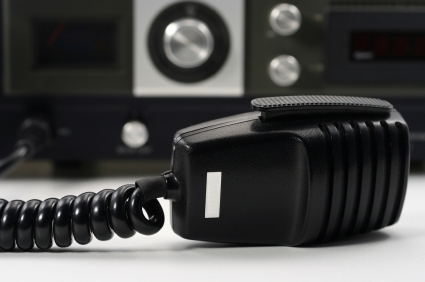 In the days before mobile phones could be purchased at petrol stations, folks that were on the road and needed to contact the office used two-way radios. Well, they also used payphones, carrier pigeons and tin cans connected by string, but you get where we’re going.
In the days before mobile phones could be purchased at petrol stations, folks that were on the road and needed to contact the office used two-way radios. Well, they also used payphones, carrier pigeons and tin cans connected by string, but you get where we’re going.
Two-way radios, as the name suggests, can transmit and receive a signal. As well as all the radio parts, they contain a microphone and a speaker. Unlike current mobile phones that can send and receive simultaneously, the earliest two-way radios could only do one thing at a time, which is known as simplex mode. The earliest systems were able to work over vast distances with a fixed system working across the Atlantic Ocean in the early 1900s.
What’s even better about two-way is that it was an Aussie that developed the first portable two-way radio. Used by the Victorian police in the 1920s, the radios were put into police cars of the day. Sure, the radio took up the whole back seat so they couldn’t actually catch any bad guys, but at least they could report crimes while on the go rather than use the old phone-box system that had been in place.
Over the next few years, two-way radios improved with better range and greater portability. Portable units were used by police forces across the world and with great effect during the Second World War. By that time, radios that worked on multiple frequencies at the same time were around so that duplex communication, where sending and receiving happens at the same time, was possible.
Two-way radios work by having the two parties on the line setting their radios to the same frequency. The trick, of course, is to use a frequency that’s not in use by someone else. To overcome that, two-way systems that scanned for a calling code were created so that the people trying to communicate weren’t locked into a specific channel. That way, if their preferred frequency was busy they could easily switch and find each other. This gets even more complex with trunked systems that use programming logic to pick the best frequency for communication.
Transmission can be over either Ultra High Frequency (UHF) radio and Very High Frequency (VHF) with the permissible frequencies different depending on local laws. Most of the available channels under either type require some sort of permit to be used.
While two-way might seem a little antiquated, it’s still in widespread use with taxi services, public transport and the military. Even the mobile phone network uses a form of two-way through the Push-to-Talk services we have today. Although they use the mobile phone network, the principle of point-to-point communication, is still the same.
MobileModo is Gizmodo Australia’s look at the rise and rise of the mobile phone, from Bell’s landline to the ubiquitous mobiles of today.